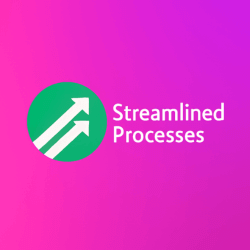For Subscription Revenue Management Comparison, see our main page here.
What Is Subscription Revenue Management and Why It Matters
Managing subscription revenue is far more than just billing cycles and invoices. It involves planning, forecasting, analytics, compliance, and customer relationship management. As the subscription economy grows, businesses must understand how different platforms handle these tasks.
To clarify, Subscription Revenue Management Comparison allows companies to see how each system supports revenue operations. By comparing solutions side by side, organizations can find the best way to reduce churn, increase retention, and remain compliant with accounting rules like ASC 606 or IFRS 15.
Why Comparing Subscription Revenue Management Tools Is Crucial
Choosing the wrong tool can stall your growth. Subscription-based companies rely on accurate, integrated billing and analytics. Without these, financial statements suffer. Consequently, investor confidence may drop. Therefore, a thoughtful Subscription Revenue Management Comparison becomes essential for scaling successfully.
Take, for example, a SaaS startup scaling from freemium to enterprise clients. Early-stage billing tools may lack advanced reporting or integrations with ERP systems. As a result, manual processes create friction, and errors increase.
Core Criteria in a Subscription Revenue Management Comparison
Not all tools are created equal. When reviewing systems, consider your growth stage, volume of subscriptions, global reach, and compliance needs. Also, think about automation and integration.
- Recurring Billing Capabilities: Can the system support multi-tiered pricing, trials, usage-based billing, and promotions?
- Revenue Recognition: Does it automate compliance with ASC 606 or IFRS 15, especially during contract adjustments?
- Customer Insights: Are churn, MRR, and retention metrics available in real time?
- Integration: How well does it connect to your CRM, ERP, or customer support systems?
- Automation and AI: Look for predictive insights and machine learning to optimize retention or forecast revenue.
Comparing Popular Subscription Revenue Management Platforms
Let’s dive into real-world examples where Subscription Revenue Management Comparison helps companies choose the right solution:
Zuora vs. Chargebee
Zuora is often favored by large enterprises due to its robust automation, revenue recognition features, and scalability. It also offers strong ERP integrations, a critical factor for global organizations.
Chargebee, however, caters to startups and growth-stage businesses. It offers better ease of use, faster setup, and agile pricing models. In short, Chargebee wins in flexibility, while Zuora excels in enterprise depth.
Stripe Billing vs. Recurly
Stripe Billing is popular among developers for its API-first approach. It integrates well with payment processing and ecommerce platforms, making it ideal for digital-first businesses.
Recurly appeals to mid-market players needing dunning campaigns, churn analytics, and real-time reporting. Consequently, it helps marketing and finance teams work from the same data source.
SaaSOptics vs. NetSuite
SaaSOptics offers deep financial reporting and revenue recognition, commonly used by VC-funded SaaS firms. It allows teams to automate ASC 606 compliance alongside SaaS metrics tracking.
NetSuite brings complete ERP functionality—ideal for companies seeking an all-in-one solution with accounting, inventory, and revenue tools. However, implementation can be costly and lengthy.
Industry Trends in Subscription Revenue Management
The subscription economy is booming. Businesses across media, healthcare, SaaS, and retail are adopting recurring models for predictable revenue. As a result, Subscription Revenue Management Comparison is no longer optional—it’s vital.
In addition, AI and automation now play a larger role. Modern platforms are embedding predictive analytics to anticipate customer churn. Moreover, automation tools allow finance professionals to shift away from spreadsheets and focus on insights.
Another major trend is compliance. Revenue recognition regulations are becoming stricter. Therefore, systems that automate deferred revenue calculations and reclassifications are in higher demand.
Common Mistakes to Avoid When Selecting a Platform
Selecting the wrong platform can lead to revenue leakage or finance bottlenecks. To reduce risk, avoid these common pitfalls:
- Ignoring Integration: A system that can’t sync with your existing tools leads to duplicated work.
- Underestimating Compliance: If your team handles contracts manually, errors and liabilities rise.
- Lack of Flexibility: Choose a solution that scales with your pricing changes and international customers.
In short, take time to map business goals with software capabilities during your Subscription Revenue Management Comparison process.
Real-World Case: A SaaS Company Saves Time & Cost
Consider a B2B SaaS firm managing 5,000+ monthly subscriptions. Initially using spreadsheets and QuickBooks, the finance team struggled with renewals and deferred revenue. After an extensive Subscription Revenue Management Comparison, they chose SaaSOptics coupled with HubSpot.
The result? The finance team reduced monthly close time by 40% and identified a revenue leakage of 3% they could now recover. Most importantly, they had cleaner audits, which helped during Series B fundraising.
Benefits of an Informed Subscription Revenue Management Comparison
Companies that make thoughtful comparisons gain more than just software. They often unlock:
- Reduced churn and better customer lifetime value
- Improved forecasting and scenario planning
- Cleaner audits and faster close processes
- Greater alignment between finance, sales, and operations
In the same vein, teams gain confidence during investor due diligence or corporate audits.
FAQs About Subscription Revenue Management Comparison
What’s the difference between billing tools and revenue management platforms?
Billing tools focus on charging customers. Revenue management platforms also handle accounting rules, forecasting, and analytics.
How often should we revisit our platform selection?
At least once every 12–18 months. As your company grows, your needs evolve. What worked for a startup may not suit a scaling org.
Can we integrate multiple tools across departments?
Yes, but integration planning is crucial. Choose tools that offer open APIs or native integrations to CRMs and ERPs.
Final Thoughts on Choosing the Right Platform
Ultimately, a strategic Subscription Revenue Management Comparison helps you choose tools that not only manage revenue but also fuel growth. With the right platform, your team can scale operations, remain compliant, and reveal actionable insights. Most importantly, you’ll enable smarter decisions across your business.
This article was created with the assistance of AI tools and reviewed by our team at Streamlined Processes LLC to ensure accuracy and relevance.
Follow us on Facebook here.

